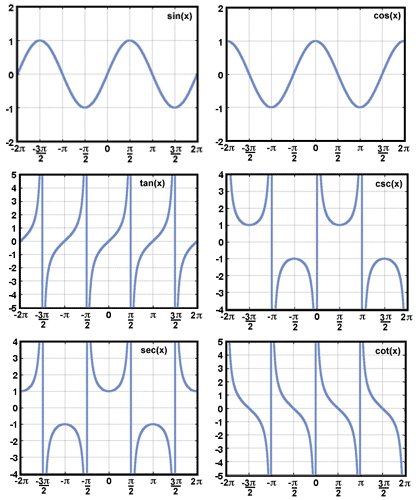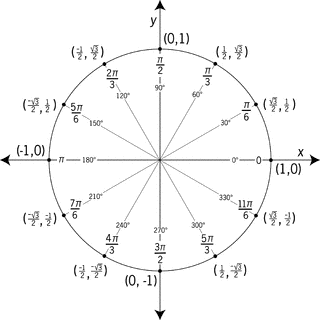 How do trig Graphs relate to the Unit Circle?
How do trig Graphs relate to the Unit Circle? 
http://etc.usf.edu/clipart/43200/43217/unit-circle9_43217_md.gif
http://img.sparknotes.com/figures/A/ad79275cb59e569b790cb945a4ffc553/triggraphs.gif
The Trig Graphs relate to the unit circle because they are originated from it in which they have been unraveled from being a circle. These trig graphs follow the same patterns as the unit circle except that they are not in a circle form more like waves. The coordinates are still the same and have the same positive and negative signs there on the trig graph. (a) A period is how long it takes in order for the cycle to repeat its pattern. The period or sine and cosine is 2pi because that is how long it takes the graph to repeat its pattern. The pattern for sine is positive, positive, negative, negative, which comes from the unit circle using ASTC. The same thing is being applies there. The Pattern for cosine is positive, negative, negative, positive, also comes from the ASTC on the Unit Circle. The reason why tangent and cotangent have a period of pi is because that is how long it takes for the cycle to be repeated the pattern being positive, negative, positive negative throughout the unit circle. The positive negative is the pattern and it is being repeated twice in one revolution of the unit circle half of 2pi is pi which is why tan and cot have a period of pi. (b) Amplitude also has a relates with the trig graphs and the Unit Circle. The Amplitude is half the distance between the highest and lowest points of the graph. In the Unit Circle sine and cosine cannot be greater than or equal to 1 or -1. With this being said those are the restrictions that are set upon those two functions. The other trig functions don't have amplitudes because because they do not have any restrictions on the Unitt Circle since tan and cot can be greater than 1 or less than -1.
http://img.sparknotes.com/figures/A/ad79275cb59e569b790cb945a4ffc553/triggraphs.gif
The Trig Graphs relate to the unit circle because they are originated from it in which they have been unraveled from being a circle. These trig graphs follow the same patterns as the unit circle except that they are not in a circle form more like waves. The coordinates are still the same and have the same positive and negative signs there on the trig graph. (a) A period is how long it takes in order for the cycle to repeat its pattern. The period or sine and cosine is 2pi because that is how long it takes the graph to repeat its pattern. The pattern for sine is positive, positive, negative, negative, which comes from the unit circle using ASTC. The same thing is being applies there. The Pattern for cosine is positive, negative, negative, positive, also comes from the ASTC on the Unit Circle. The reason why tangent and cotangent have a period of pi is because that is how long it takes for the cycle to be repeated the pattern being positive, negative, positive negative throughout the unit circle. The positive negative is the pattern and it is being repeated twice in one revolution of the unit circle half of 2pi is pi which is why tan and cot have a period of pi. (b) Amplitude also has a relates with the trig graphs and the Unit Circle. The Amplitude is half the distance between the highest and lowest points of the graph. In the Unit Circle sine and cosine cannot be greater than or equal to 1 or -1. With this being said those are the restrictions that are set upon those two functions. The other trig functions don't have amplitudes because because they do not have any restrictions on the Unitt Circle since tan and cot can be greater than 1 or less than -1.
In the trig graphs they are divided in 4 sections which are the quadrants when they are put into Unit circle Form. This guides whether the graph will be going above or below the x axis. If it is above the axis than the function was positive in that quadrant, if the hump is \ the axis then the function was negative on that quadrant.
In Cooperation with google.com
No comments:
Post a Comment